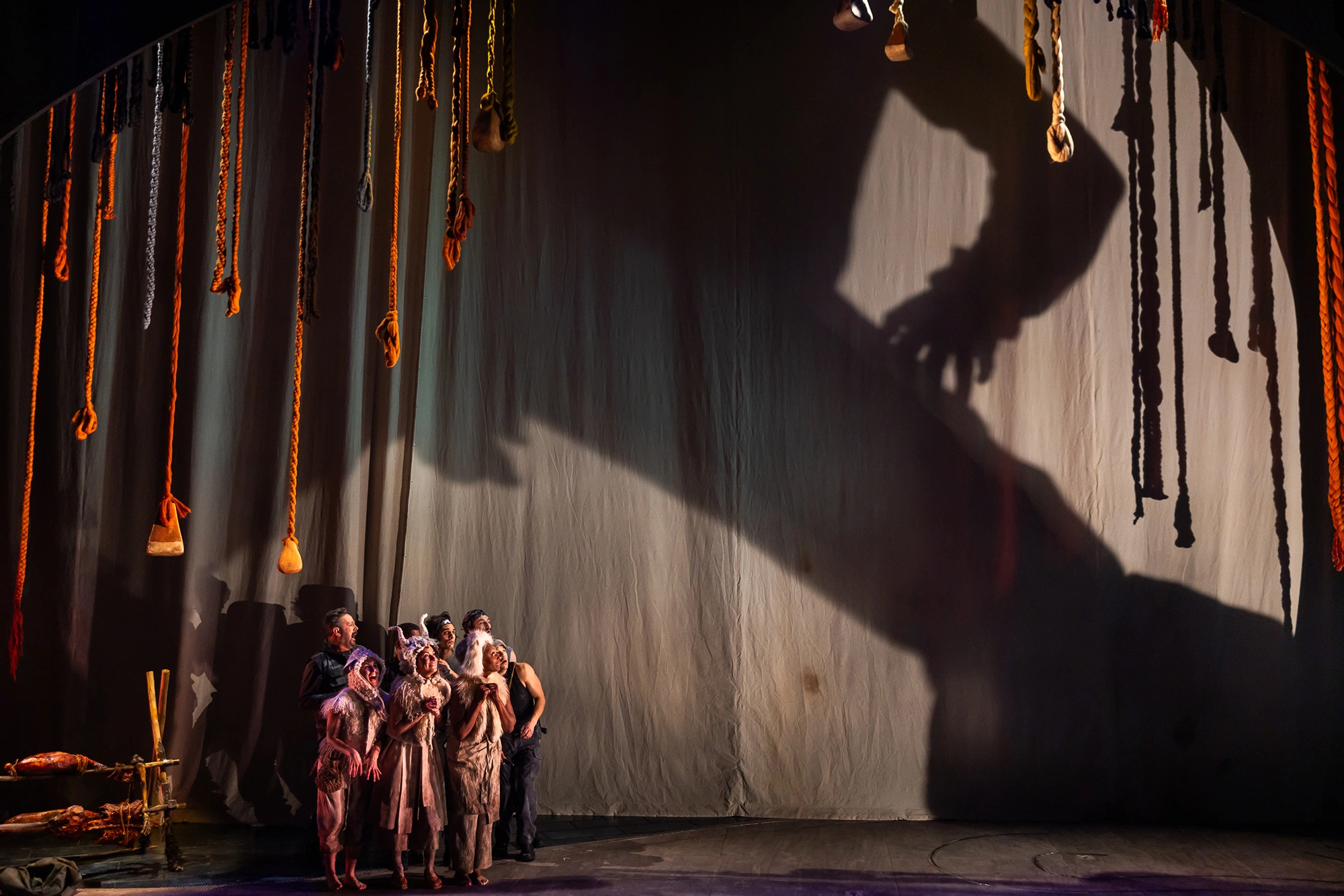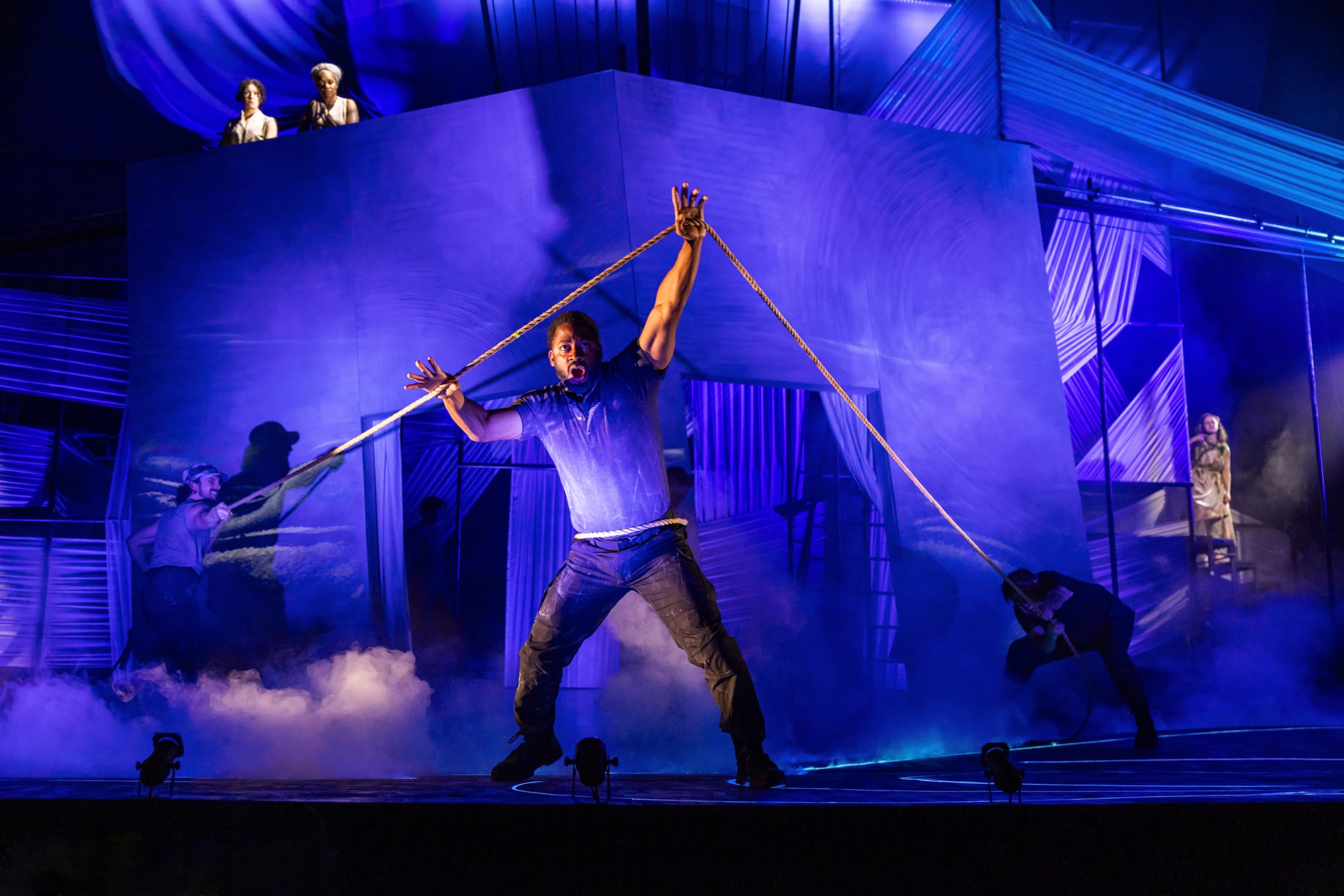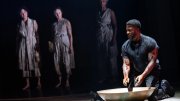Odysseus does not want to remember the Trojan War. He does not want to remember the bloody battles, the cunning horse, or the ruthless sacking. But the memories keep creeping in. Should he head home, facing his past in its full truth, or remain adrift? Through inventive stage mechanics and a dash of humor, the American Repertory Theater’s (A.R.T.) adaptation of The Odyssey explores how to live after tragedy.
Odysseus (Wayne T. Carr) is not the only character grappling with memory. Throughout his decades-long absence, his wife Penelope (Andrus Nichols) must also decide whether to move on. Playwright Kate Hamill parallels the couple’s journey, flipping back and forth between Odysseus and Penelope.
The staging helps clarify the multidimensional plot. The set is simple, with key pieces doubling as different objects. A large wood panel, for example, can serve as Odysseus’s ship or Penelope’s palace wall. Her bed doubles as his ship’s mast. Though most actors play multiple roles, that fluidity is rarely confusing—bold costuming and clear backdrops help guide viewers.

Particularly notable is the production’s use of puppeteering and shadows. Penelope recounts Odysseus’s heroics to her son, Telemachus (Carlo Albán), through a puppet montage that feels like a bedtime story (and is fitting for a myth once passed down orally). The puppeteering excels in scenes with the Cyclops Polyphemus (Jason O’Connell). O’Connell stands on the side of the stage maneuvering his legs to cast a giant shadow above Odysseus’s crew. A projected puppet eye allows Polyphemus to make facial expressions, even while O’Connell is in the dark.
Repurposing an epic poem into a three-hour play requires abridging. Hamill cuts out entire portions of Odysseus’s journey (such as his seven-year tie-up with Calypso). She meditates on Odysseus’s time with the sorceress Circe (played by Hamill herself) for a particularly long time. Though the scenes on Circe’s island can drag on—especially compared to Odysseus’s brief-yet-exciting encounter with Polyphemus—they help reinforce the core message of the play. On the island, Odysseus’s men reenact scenes from Troy, but the protagonist shuts them down, saying, “I lived through it.…Once was enough.” But the longer Odysseus remains on the island, the more he realizes that he cannot simply shut out the past. Blissful ignorance is not sustainable.

Throughout the production, Hamill sprinkles in modern touches. The actors curse (sometimes too much), Penelope’s chaotic suitors dance to club beats (while donning fur coats and sunglasses), and humorous songs punctuate the action (the sailors spread rumors about Circe to the tune of a Christmas carol)—interjections that animated the audience.
The A.R.T.’s Odyssey serves as a reminder of why this ancient tale has persisted for almost three millennia. With its focus on memory, Hamill’s adaptation provokes universal questions about healing and forgiveness.
The Odyssey runs through March 16 at the American Repertory Theater.









